Polling Methods do not Introduce Bias in Texas Predictive Polls
Our election simulation relies heavily on the use of predictive polling. Thus, we wondered specifically if polling methods affected the polls’ results.
One type of polling, telephone polling, involves calling voters directly. About 95 percent of Americans own a telephone, which makes this an effective method to reach many demographics. The three main types of telephone polling are traditional telephone interviews (conducted by a person), computer-assisted telephone dialing, and computer-assisted interviewing. For the purposes of our study, we grouped all three methods into the phone category.
There is also web polling, which requires respondents to answer questions via the internet. Some online surveys are limited to a sample from a larger population, while others allow anyone to participate. Web polling is a popular method of polling because it is often less expensive than telephone surveys, however, one issue with this method is that fewer Americans have consistent internet access than phone access.
Some polls utilize both telephone and web methods, so they were categorized as Combined Method polls.
We hypothesized that internet polling would show a statistically significant lean towards Joe Biden, whereas phone polling would be more even between the two presidential candidates. We speculated that one possible factor contributing to this bias would be internet literacy, because younger voters are generally more internet savvy, and millennials have a higher percentage of registered Democrats than older age groups.
To test this prediction we looked at an important swing state in the upcoming election: Texas. We collected data from 66 polls between April 8th, the day Biden became the sole Democratic candidate, and October 18th. We then analyzed the polls by their different methods: some conducted by phone interviews, some by internet survey, and some by a combination of these methods. These polls were collected from Five Thirty-Eight’s polls page:
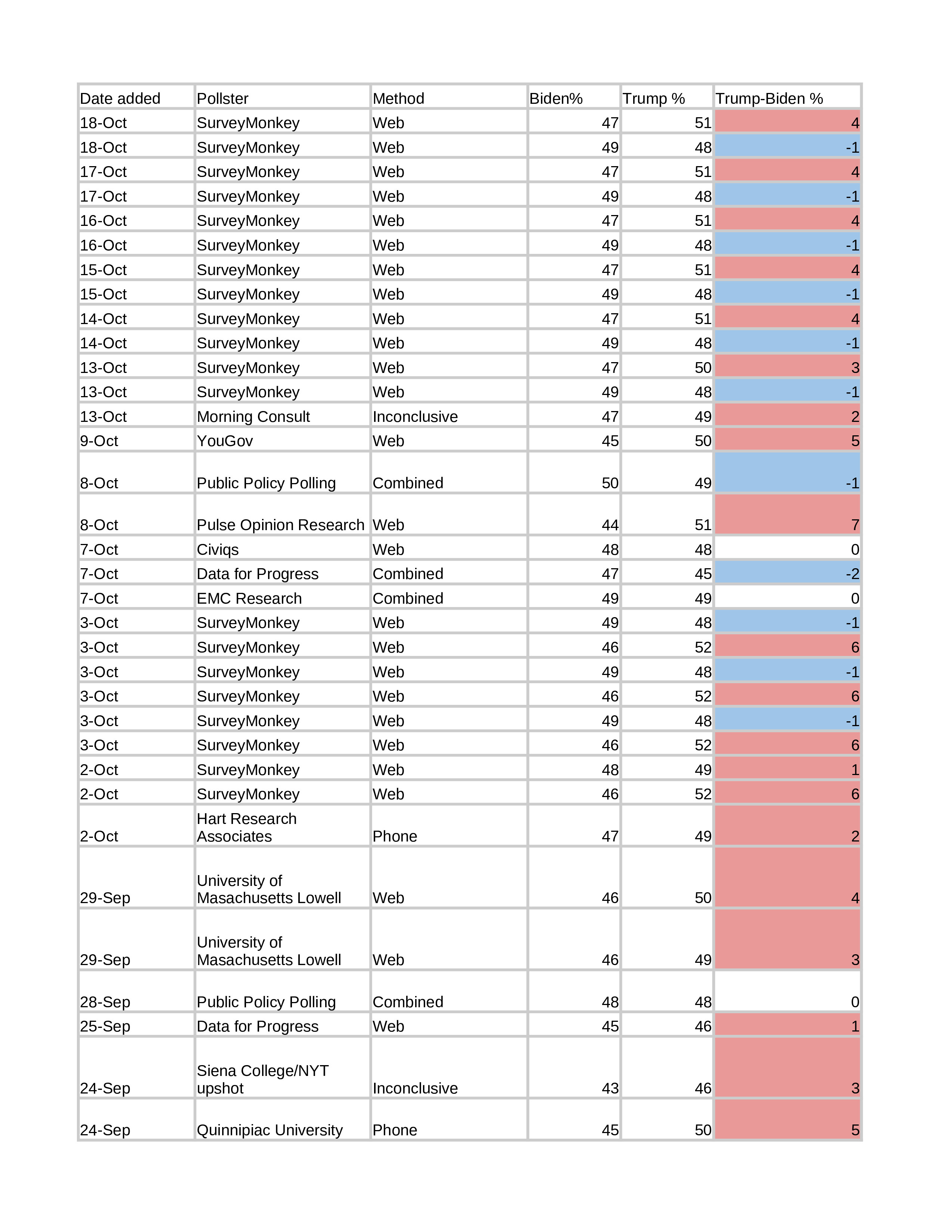
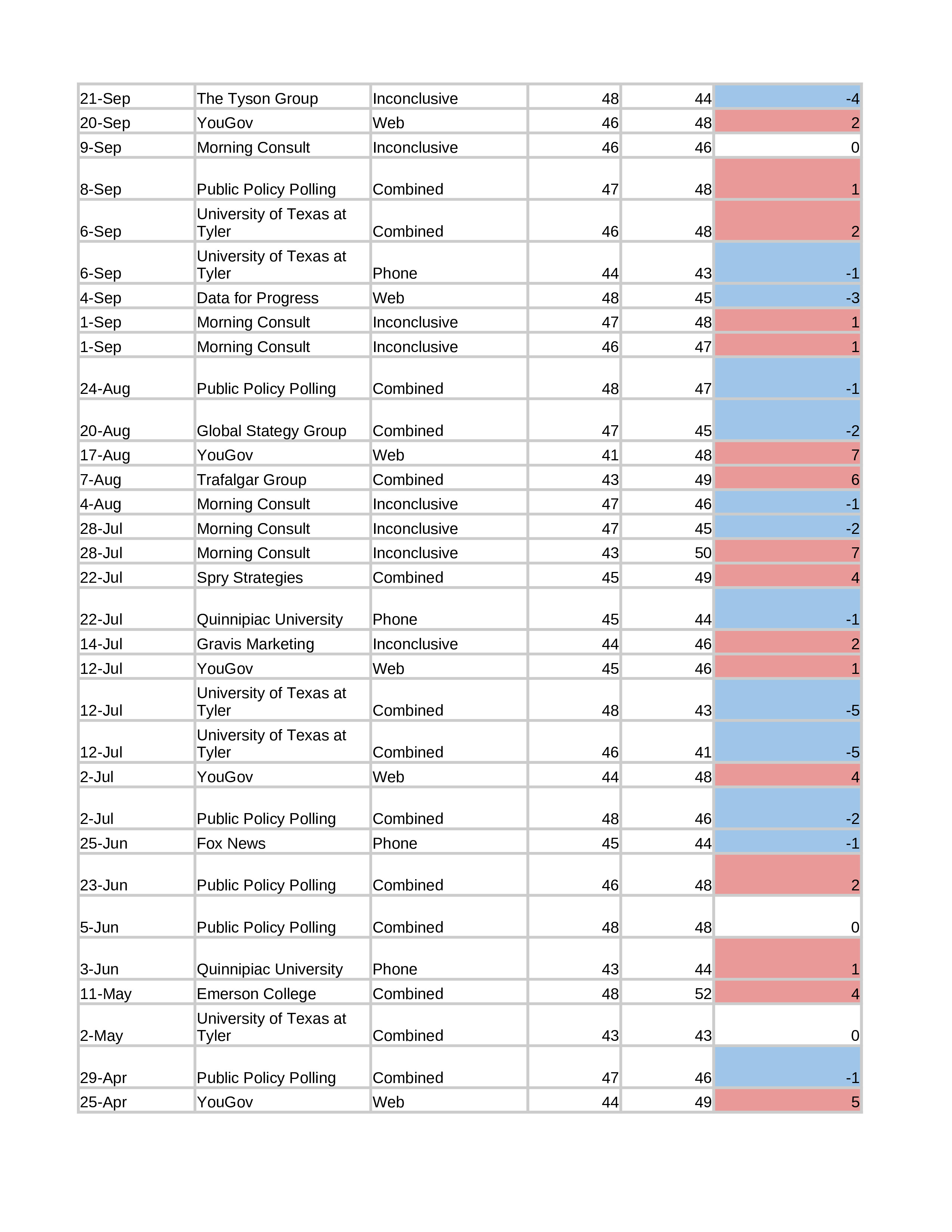 *A blue cell represents that a poll reflects a Biden lead, a red cell represents a Trump lead, and a white cell represents a tie
*A blue cell represents that a poll reflects a Biden lead, a red cell represents a Trump lead, and a white cell represents a tie
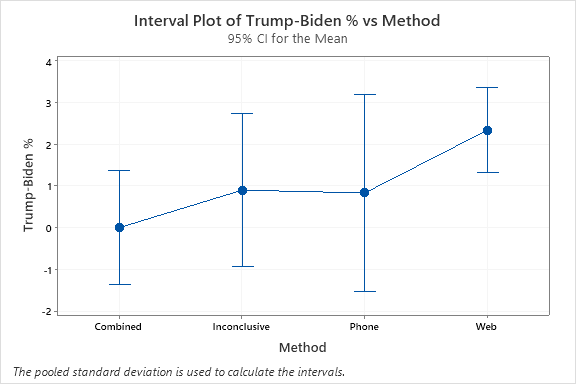
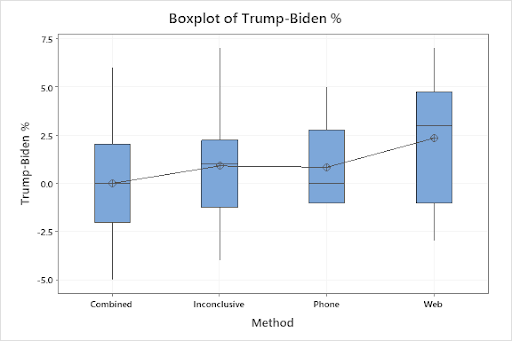
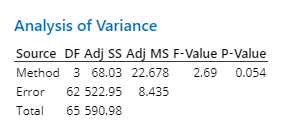
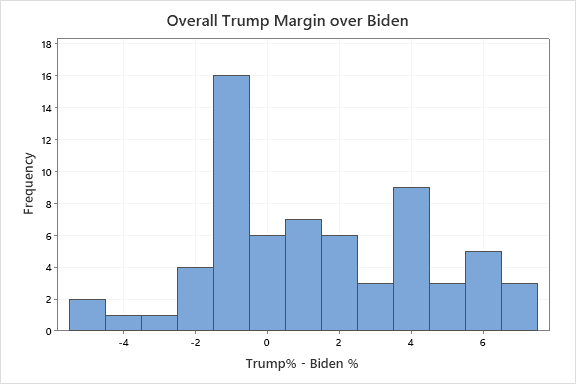
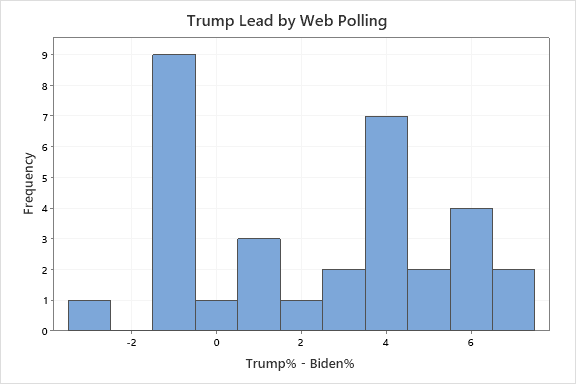
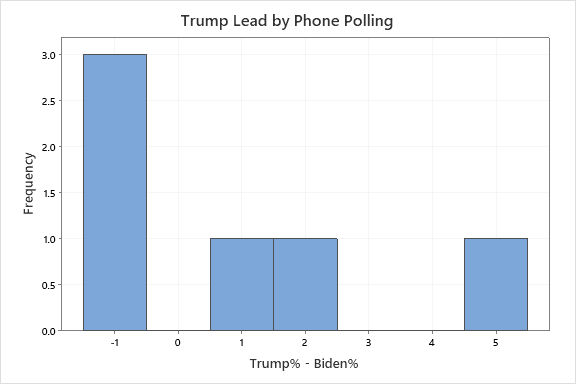

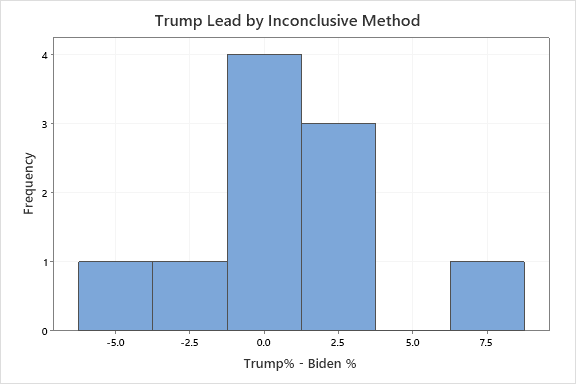
Our analysis revealed that our initial hypothesis was completely false. Every method favored Donald Trump in its results by a slight margin. Between the different methods, web polling showed the highest support for him with a 2% lead on average, while phone polling reflected only a 0.83% margin in his favor. This evidence suggests that using different polling methods does not introduce significant bias. All the results seemed pretty similar because Trump’s average percent lead was within a range of 4.34% for every method. After running one-way ANOVA of our data, we were given a p value of 0.054, which indicates an extremely low likelihood of interference or poll rigging.
